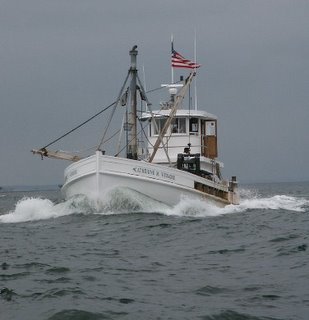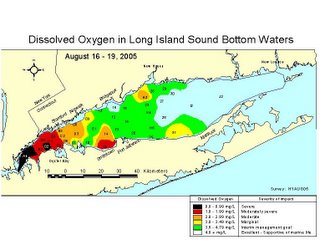My Norwegian Uncle
When Dan got too old to handle the responsibilities of an apartment, he moved to a Norwegian old folks home, on Lighthouse Hill. He liked it there and had a pleasant, homey room to himself in the part of the institution that seemed as if it actually had been someone’s home, and he liked to hike on the trails of the Greenbelt, a big nature preserve that was nearby. On the day after Christmas, 1980, I visited him at the home. I brought him a Christmas card written in Norwegian, and some julekake that I had bought at Hansen’s, a Scandinavian deli in our neighborhood.
I don’t remember what I asked, but somehow he started talking about his days as a sailor. He told me he first went to sea at age 17, as a deck boy, doing the jobs nobody else would do. It was probably 1913. The sailors considered him to be good luck for their ship. Dan said it was not true, but he then told me a couple of stories that explained how the notion survived.
There was the time, for example, when he sailed to Italy on a ship carrying soldiers’ paychecks. The most direct route passed through a part of the Atlantic where enemy submarines were presumed to be patrolling, and the captain had instructions to avoid it. Ignoring the orders, he sailed straight through, reaching Italy unharmed and far quicker than the other ships that had set off with them. Once in Italy, though, Dan – and his good luck – decided to stay behind. Loaded with grain, the ship set sail again. But before it could reach its destination – somewhere in Africa – it sunk.
Next, he signed on with a newer ship, one that could do 16 knots. He sailed from New York across the North Atlantic, a tough route -- the North Atlantic, he said, can throw the Queen Mary and the Queen Elizabeth around. Dan’s ship reached Goteborg and then sailed back to New York, where Dan disembarked and stayed behind. On its return to Goteborg, the ship hit rough waters. A mast snapped; the ship was forced to turn around and barely made it back to New York.
Dan was letting the memories come to him now, recalling imperfectly what must have been his great adventures, all of them many decades in the past. I wasn’t taking notes, but later in the day I wrote down, from memory, what he had told me. He said that from the time he was 17 until he stopped sailing, he never touched a drink (which made him a rarity among the Andersens), not because he was any better than the others, he said, but because he did not like the taste. When his ships reached port, the other sailors would head off and the first bar they reached, bingo, he said, they went in. That’s when he got his education, especially in Italy, skipping the bars and going instead to concerts (he mentioned how beautifully the singers sang) and museums, including one, he recalled, at Vesuvius.
The stories about sailing reminded him of another job. Dan’s sister in Norway (I think her name was Agatha, pronounced in Norwegian “a-GOT-a”) died in childbirth and Dan adopted the child, whose name was Olaf Ecklund. (Dan also was largely responsible for raising one of my grandfather’s sons, Dennis Andersen. I think Dan essentially stepped into a parental void created because Olaf, at the time Dennis was born, already had several adult children and couldn’t be bothered taking on the responsibility of another; and because Dennis’s mother, Gudrun Larsen, had a bit of a drinking problem. Through his and his spouses’ various marriages, Olaf had a complicated web of parental responsibility. His first marriage was to Jenny LaCour, a woman who was either French or of French descent and whose parents didn’t particularly approve of Olaf, who was something of a roustabout. Jenny LaCour (the spelling of whose last name I can’t vouch for – no one left seems to remember) had been married to a fellow named Sather, apparently, and they had a son named Arthur. After Jenny and Olaf married, they had two children, Edith (my aunt) and Alfred George (my father, who was known as George and who in fact signed his name George A. Andersen). Jenny died when Edith and Georgie were children. Eventually Olaf married Gudrun, who brought a son named John Larsen to the marriage. Olaf and Gudrun then had a son named Paul Dennis, who was known exclusively as Dennis. I remember Dennis mainly as a rebellious teenager ignored by Olaf, henpecked by Gudrun (who tried to force him into playing his accordian, very much against his will, at family gatherings), and overseen mainly by sober Dan, who took him camping and fishing, and who probably didn’t admire his older brother for fathering a son he didn’t really want.)
But back to Olaf Ecklund. When Dan was able, he sailed back to Norway to take custody of Olaf. He found him at an orphanage, dressed in rags. Dan’s mother, Agatha, was still alive at 79 (in fact she lived on for more than two decades and breathed her last breath, according to family legend, while fixing the roof); Dan’s father was 82, sick in bed, and soon to die. Dan said goodbye to his father, got on a boat with his young nephew Olaf, and sailed back to Staten Island. But by then Dan was broke and had to sail again to earn some money. He was forced to leave Olaf at a house, in the West Brighton section of Staten Island, that was next door to a whorehouse, Dan said with great moral repugnance, frequented by homosexuals.
Dan was well into his 80s when he told me all this, his memory no doubt fading, his accent no easier to understand than it had been 20 years earlier, when I was a boy. I don’t know how he felt just then, but I was fatigued (though not bored) from listening to his tales and trying to put them into context. (Olaf Ecklund! I’d been hearing that name my whole life but never knew exactly who he was – and now I knew: he was my great aunt’s son.) It was the day after Christmas, I was 26, and no doubt there was a party somewhere that I had to get to. I didn’t know it then but I’d live on Staten Island for only another year or so and, although I’d visit Dan regularly, I’d never get back to asking him about the old days.
After I said goodbye, I watched him walk an 83-year-old man’s walk, toward the nursing home’s kitchen, on his way to get some butter to put on his julekake. Often when I visited him he gave me some article of clothing, flannel shirts mostly, cut in what I thought of as an old-man style, which I loved and wore until my elbows poked through, and once a Navy blue sweater of an unusually tight weave that he said had been his when he was sailing on merchant ships. It’s still the warmest sweater I have.




